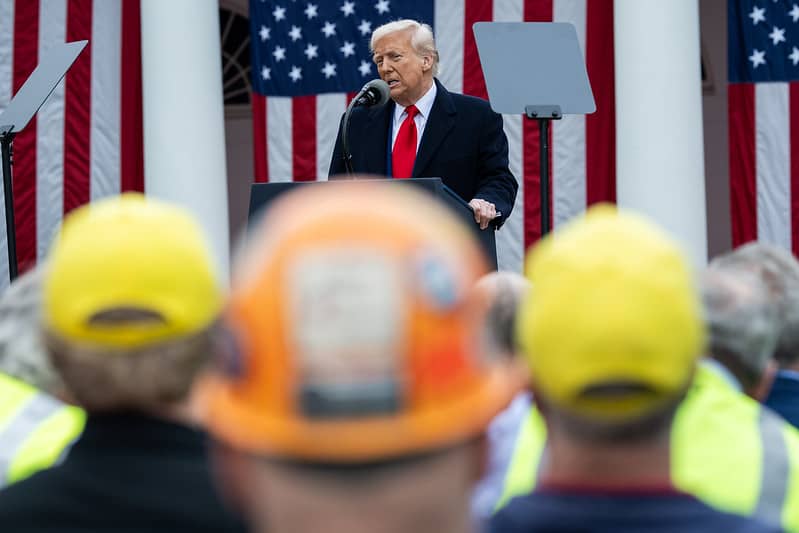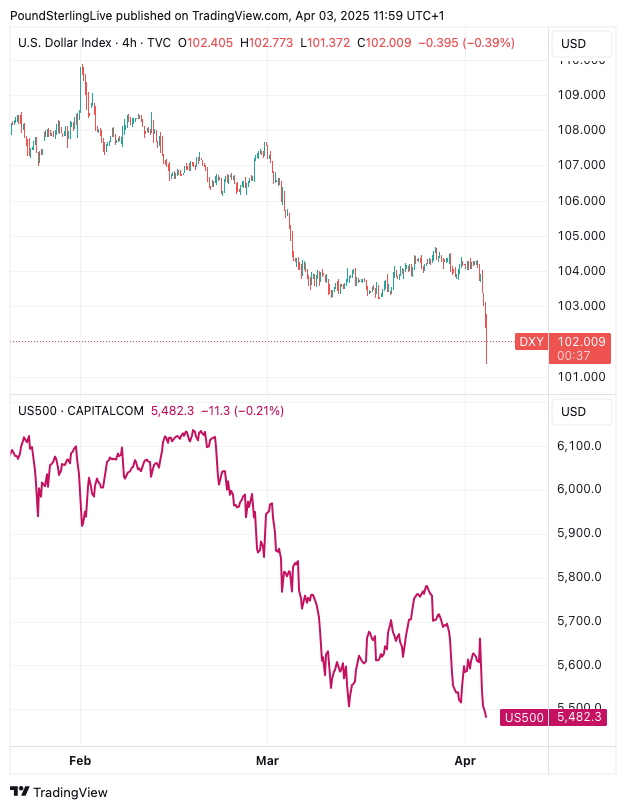
Image: White House Press Office.
U.S. assets risk a big selloff as international investors are forced to unload.
Beware a big, self-fulfilling unwind of U.S. investments by foreign investors, warns a noted currency analyst.
"We are becoming increasingly concerned that the dollar is at risk of a broader confidence crisis," says George Saravelos, head of FX research at Deutsche Bank.
The call comes in the wake of the U.S. announcement of significant import tariffs, which was met by a stock market selloff and a slump in the Dollar.
This hand-in-hand fall in the Dollar and stocks is unusual and poses significant risks, explains Saravelos:
"We have been warning about the importance of the correlation breakdown between US risk assets and the dollar for a while - European losses on US assets are now exceeding those seen during the 2022-2023 crisis.
"The safe haven properties of the dollar are being eroded and this is imposing a significant cost on unhedged dollar holdings."
Typically, European investors in U.S. assets wouldn't need to hedge their currency exposure because the textbook says falling U.S. stocks are compensated for by a rising Dollar.
But what happens when stocks and the dollar fall together? The rising value of the Euro amplifies the foreign investor's loss.
There is a risk that the substantial holding of U.S. assets accelerates as losses become too significant to bear.
"All of this risks a self-fulfilling unwind of extreme US asset overweights from countries that have exported capital to the US over the last decade," says Saravelos.
Above: The Dollar (top) and the U.S. S&P 500 are falling in tandem, which spells trouble for foreign investors who are unhedged on their currency exposure, i.e. they didn't take out the hedging trades that would deliver a positive return in the event the USD falls.
"The US has a large current account deficit, and the currency is reliant on capital inflows for stability. A drop in the dollar, a drop in US equities and a rise in term premium in US treasuries would be the strongest market signal that a process of US disinvestment is accelerating," he adds.
His warning is that capital flow allocations unsurp currency fundamentals and that FX moves become disorderly.
"We would caution that if the dollar decline accelerates, it would be a highly unwelcome development for global central banks," he adds.

